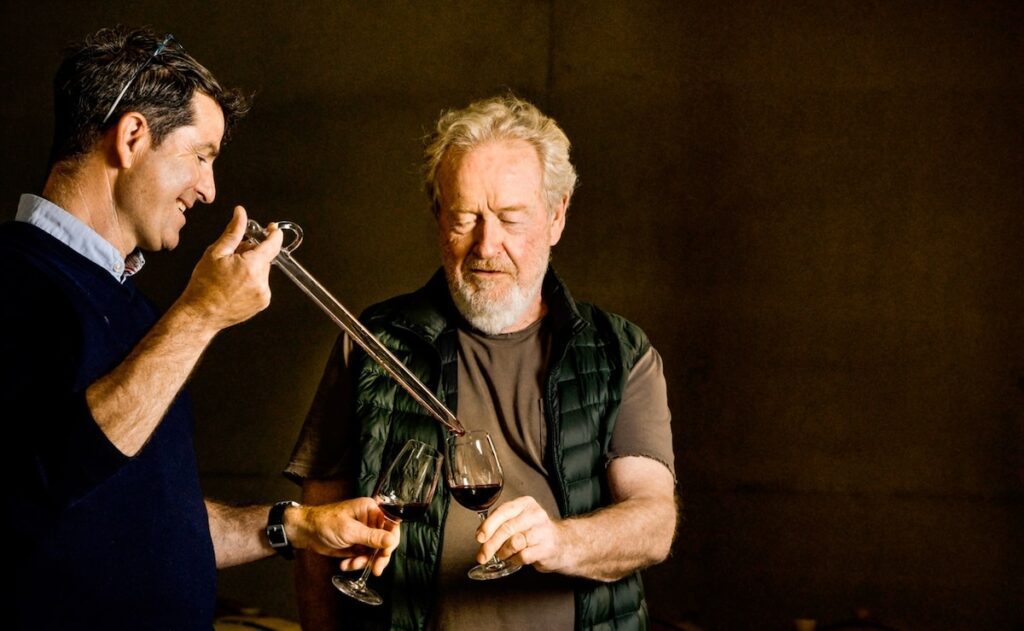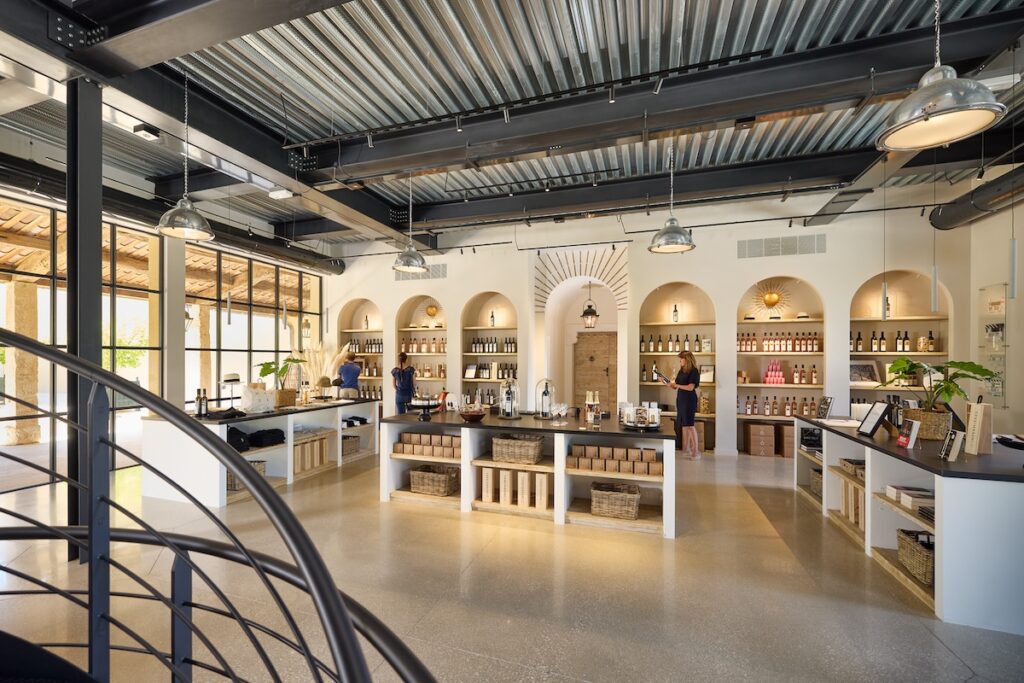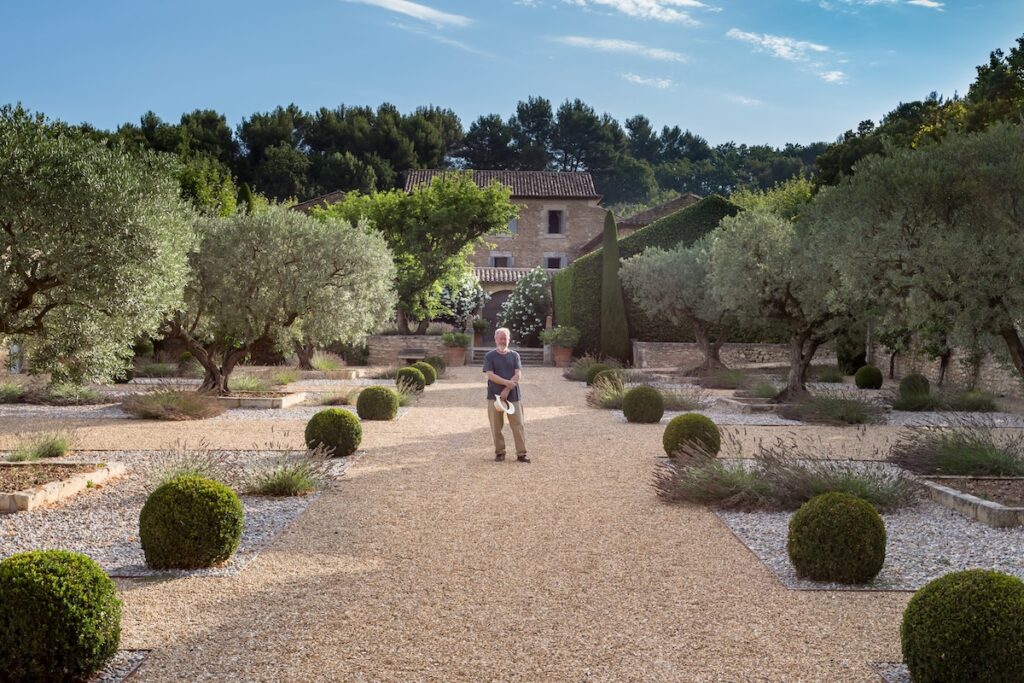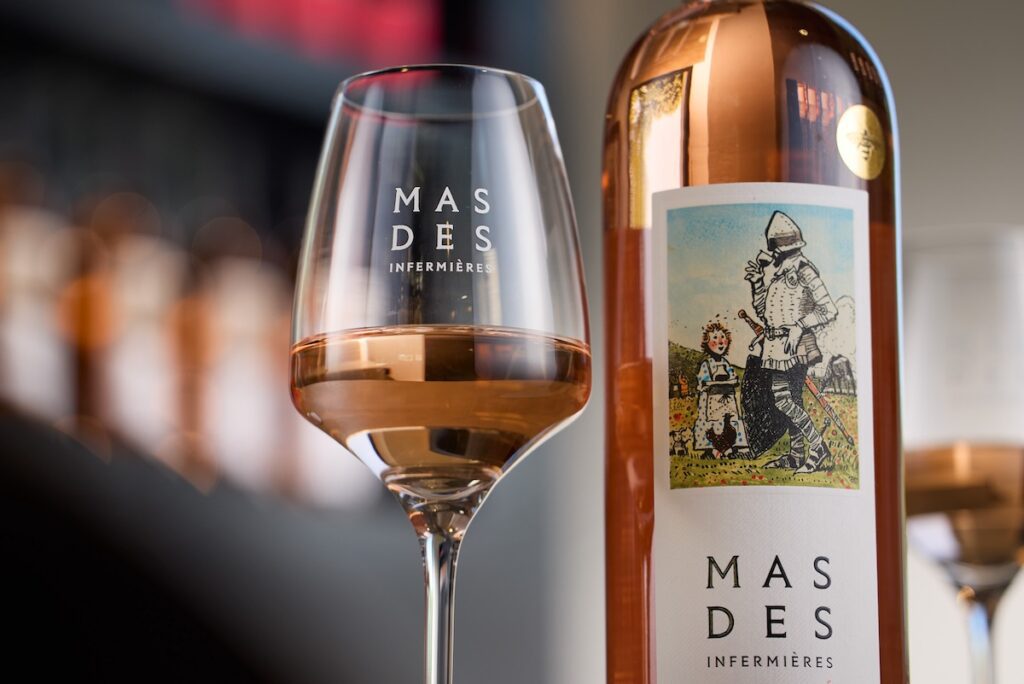This website uses cookies so that we can provide you with the best user experience possible. Cookie information is stored in your browser and performs functions such as recognising you when you return to our website and helping our team to understand which sections of the website you find most interesting and useful.
Sir Ridley Scott on the story behind his family wine estate, Mas des Infermières, and his cinematic approach to winemaking
By Michelle Johnson | 3 September 2024 | Culture, Food & Drink
Filmmaker Sir Ridley Scott reveals the story behind his family wine estate, Mas des Infermières, and how he is applying the cinematic approach to winemaking
 Nestled in the heart of the Luberon nature reserve in southern France, the idyllic family wine estate of Sir Ridley Scott has evolved from a Provençal escape to a viticultural success story. The prolific director purchased Mas des Infermières in 1992 as a holiday home where the Gladiator II director could paint, read and relax away from Hollywood – and the industry he has dominated since his second film, Alien, burst into cinemas in 1979.
Nestled in the heart of the Luberon nature reserve in southern France, the idyllic family wine estate of Sir Ridley Scott has evolved from a Provençal escape to a viticultural success story. The prolific director purchased Mas des Infermières in 1992 as a holiday home where the Gladiator II director could paint, read and relax away from Hollywood – and the industry he has dominated since his second film, Alien, burst into cinemas in 1979.
Since 2019, the estate’s picturesque 11-hectares of verdant grenache and syrah vines, olive trees and truffle oaks have been delivering a range of red, rosé and white wines that each perfectly encapsulates the unique character of the Luberon’s exceptional terroir. Although Ridley admits that, when he first bought Mas des Infermières, he had no interest in making wine himself.
“I think we all have an intuition,” says Ridley, contemplating what made him take that leap. “I’ve learned to trust mine – when something clicks, I act on it. The reason I’ve done so many movies is that I don’t pontificate over 40 subjects. My motto is: ‘Just do it – but do it the best you can.’” Related: Sir Ridley Scott stars in Tempus Magazine’s summer edition
Related: Sir Ridley Scott stars in Tempus Magazine’s summer edition
Ridley, 86, built a team of expert winemakers to help guide the process, installed a state-of-the-art cave, and applied a sustainability plan to protect the biodiversity and health not just of the vines, but the native flora and fauna of the region itself – Mas des Infermières is certified as an HVE (High Environmental Value) and bee-friendly producer.
While winemaking may be a new venture for the director, Ridley is by no means a ‘hands-off’ vintner. His directorial expertise, interest in art and design, and personal love of wine ensures his input remains invaluable to his team. After all, he says, if you’re going to make something a success, “you’ve got to be involved”.
“My experience comes from 50 years of drinking,” he laughs. “[Winemaking] is like making a movie: once you’re in, you’re in deep. Up to your nose in challenges. It’s exactly the same with wine.
“We’re all about quality,” he adds. “The competition is enormous; so many people make wine. But there are so many films now, and I’m still surviving after 40 years. I released Napoleon [in 2023] and I’m delivering Gladiator II in November. So, I just ignore [the competition] and focus on the wine.” NORTHERN SOUL
NORTHERN SOUL
While it’s tempting to draw parallels between the story of Ridley’s discovery of Mas des Infermières and his 2006 film A Good Year – in which Russell Crowe’s high-flying city investor inherits a Provence château – Ridley’s true motivation was to get back to the land.
“I’m from the north of England. I’m a bit of a farmer,” says Ridley, who was born in South Shields in 1937. “In 1972 I bought myself a small farm in the Cotswolds. We were there for 10 years – I had horses, 60 sheep, 50 ducks… The family gradually lost interest, so I was the only one who wanted to go down on the weekends.
“I sold it in ’82 but I always missed the land. In ’92 I decided I needed to find a farm and to find sunshine.” Ridley was at Cannes Film Festival when his realtor discovered Mas des Infermières. “The house was a gem. I drove 250km [155 miles], walked in and bought it.”
Soon enough, the history of the mas (the Provençal term for a Mediterranean-style farmhouse) was offering its own inspiration. The first official mention of Mas des Infermières was in 1831 – an estate belonging to General Baron Robert, a surgeon (or ‘health officer’) in Napoleon’s army. Just as it would take years for that link to the French Emperor to enter Ridley’s working life, the estate’s lush vineyards would take time to work their magic, too. Related: Renais co-founder Alex Watson talks fine gin brand and working with his sister Emma
Related: Renais co-founder Alex Watson talks fine gin brand and working with his sister Emma
“The vineyards, to me, were a garden; I had no interest in making wine,” he admits. Instead, Ridley made a deal with local producers, Cave de Lumières, who soon began winning awards for their wine. Ridley said: “I think I better start paying attention”.
Upon realising the potential of his vines, Ridley burst into action. He built a new, modern cellar; hired a new director, Christophe Barraud, and sales director, Melanie de Rudder; and undertook a complete renovation of the properties on the estate – three of which are now available as luxurious holiday homes. “The evolution has been huge,” he says. “Already, the wine is great.”
The collection itself is perfectly indicative of the terroir: crisp reds, fresh and aromatic whites and fruity, subtly spicy rosés. The vines are elevated to 200m on the cool northern face of the Luberon massif, noted for its marly limestone, sand and red clay. The most exceptional wine in the portfolio is the limited-edition Ombre de Lune, made from the estate’s oldest syrah vines and aged in barrels after an early, moonlit harvest. The Chevalier collection offers powerful and complex reds, rosés and whites, all perfect for fine food pairings. Finally, the Source collection is inspired by an abundance of water that encourages the fruity, fresh notes in the red, rosé and white cuvées.  The wines’ label designs are also created and drawn by Ridley, and inspired by the story of each expression – though despite his artistic skill, he says painting is an area of constant self-improvement.
The wines’ label designs are also created and drawn by Ridley, and inspired by the story of each expression – though despite his artistic skill, he says painting is an area of constant self-improvement.
“I’m a terrible painter,” he says, though his elegant labels and the popularity of his ‘Ridleygram’ storyboards would counter his self-deprecation. “When I’m in France I paint every day. What I’ve discovered is it’s best to have several canvases to work on. You finish a canvas, see it’s not right, come back in a month, and mess it up again. It’s an ongoing cycle – but I’m Sagittarius, and one of the [characteristics] I always took on board was: ‘When it’s finished, you’re never satisfied’.”
Read the full interview with Ridley in our Summer Edition here and read more interviews with Tempus here.







